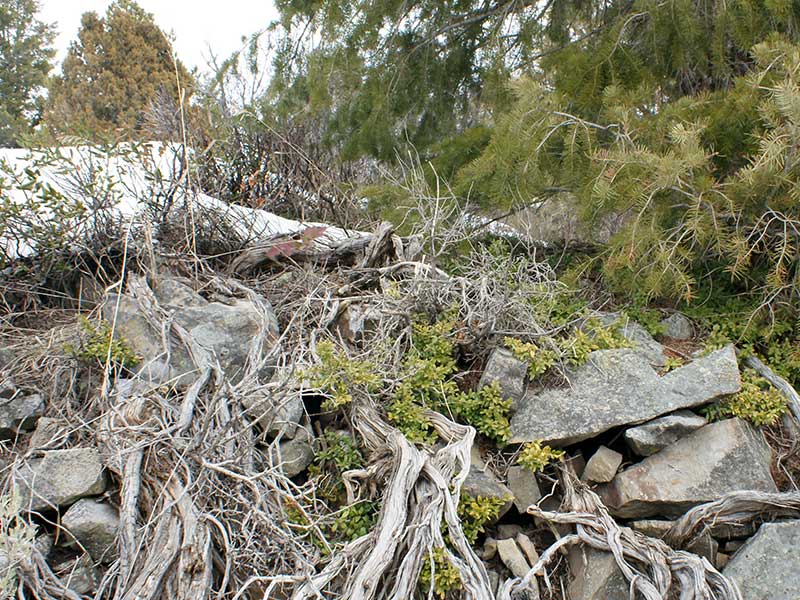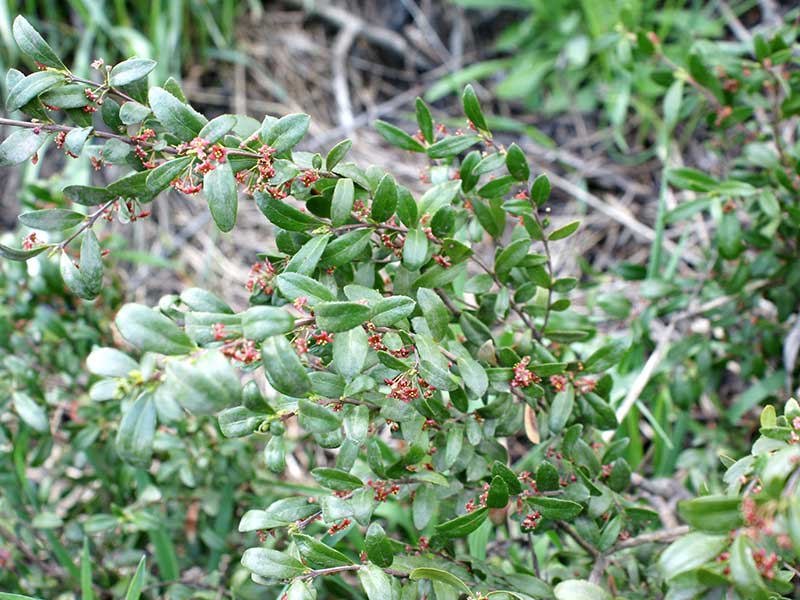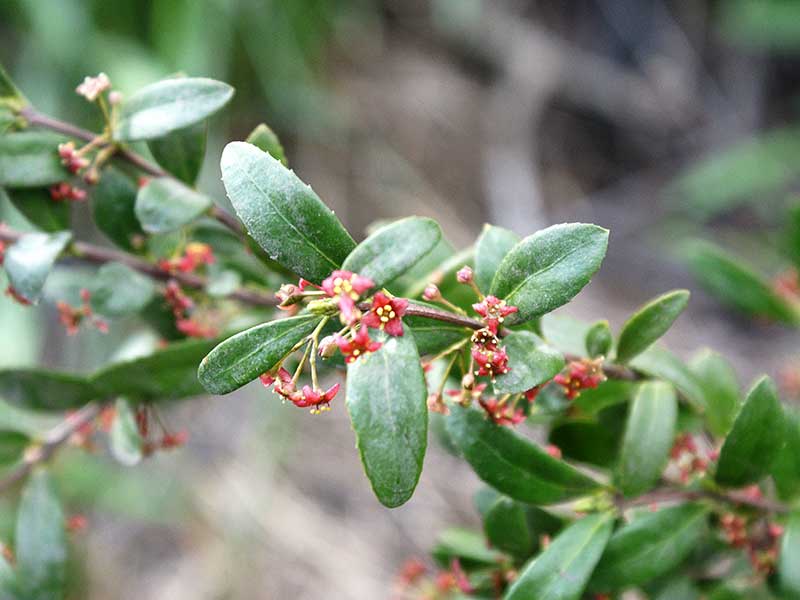Paxistima myrsinites / Oregon boxwood
- low shrub
- small, opposite leaves; lightly toothed, leathery, oval
- very early spring flowering
- teeny flowers with 4 red petals, 4 yellow stamens; in clusters
- usually on open, dry, sunny sites or open forests
Also known as: Oregon boxleaf, mountain lover, box, or hedge, false box, myrtle box leaf
Synonym: Pachistima myrsinites, Paxistima myrtifolia
First, a note about the genus name for this plant, its origin and correct spelling have been debated for nearly two centuries. Debated means that some folks spell it Paxistima and some Pachistima. The guy who gave it its scientific name spelled it variously Pachistma, Pachystima, and Pachystigma. Call it boxwood. Or whatever.
Oregon boxwood is a low, prostrate or spreading evergreen shrub growing to about 3 feet in maximum height. It is densely branched. The reddish brown stems are four-angled with corky ridges. The stems are lined with short, oppositely arranged, oval leaves. The leaves are thick, leathery, toothed, and pointed or round-tipped. They are light green when new and shiny dark green when mature. The leaves are a good food source for elk, moose and dear that browse the leaves in winter.
Oregon boxwood flowers are maroon or mahogany – reddish. They bloom in very early spring (i.e. at snowmelt) and are teeny (less than 1/4 inch across), but fragrant. They are borne in the leaf axils in clusters of 1-3 flowers.
Late in the summer, the fruits ripen as small, oval capsules containing only one or two seeds. Each seed is mostly surrounded by a white fleshy aril. The shrub reproduces by seed, and dispersed by gravity alone, although the white, fleshy arils may also entice ants to distribute the seeds.
With a slow to moderate growth rate, Oregon Boxwood rarely exceeds 3 feet and is more commonly from 8-30 inches tall. It is fairly long-lived.
Look for Oregon boxwood on relatively open, dry, sunny sites or open forests. It is often on hillsides in full or partial shade of a conifer forest. I’ve found it almost exclusively on steep hillsides under cover of conifers.
| Color | |
|---|---|
| Family | |
| Blossom size | |
| Inflorescence size | |
| Inflorescence type | |
| When? | |
| Where? |



